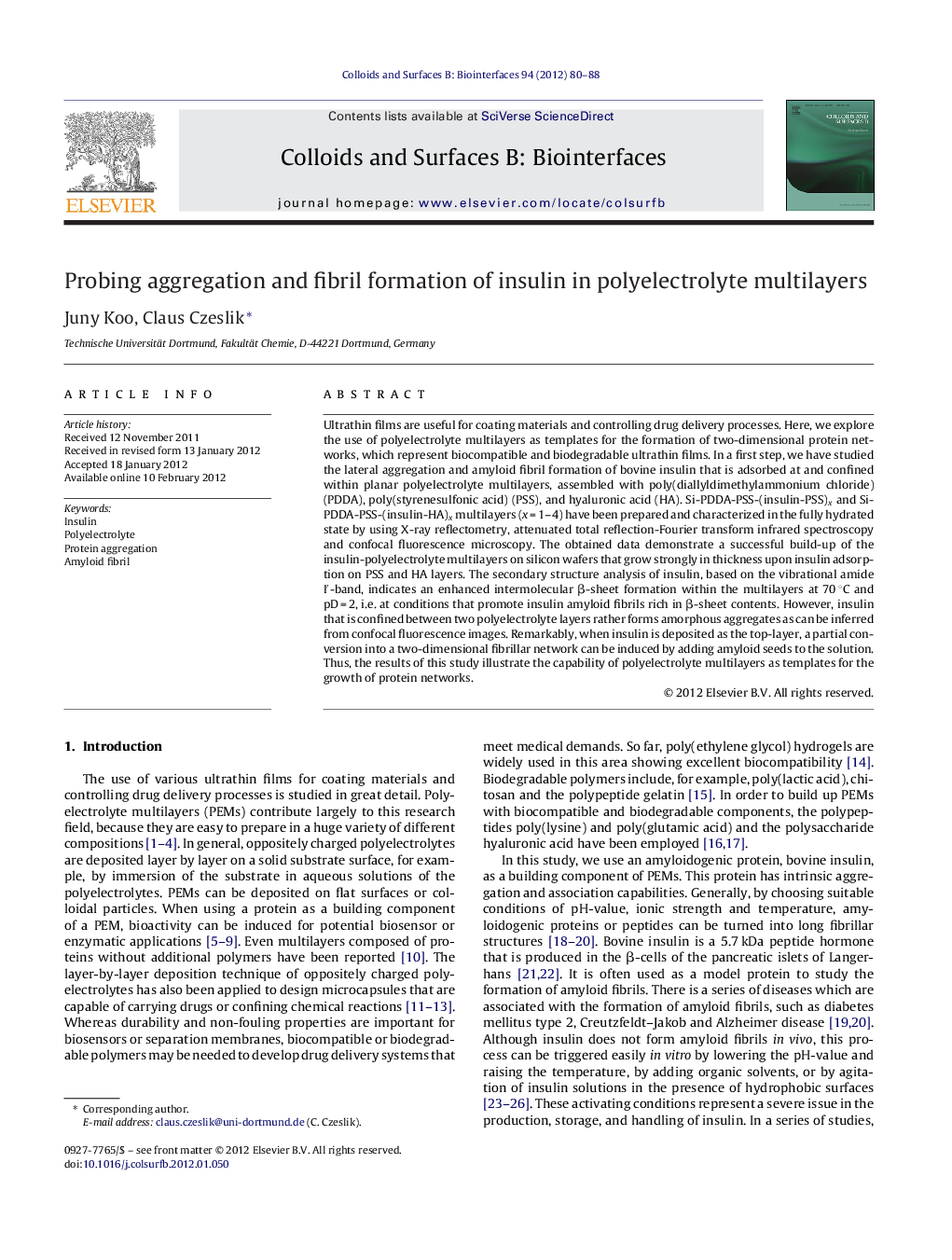| Article ID | Journal | Published Year | Pages | File Type |
|---|---|---|---|---|
| 600835 | Colloids and Surfaces B: Biointerfaces | 2012 | 9 Pages |
Ultrathin films are useful for coating materials and controlling drug delivery processes. Here, we explore the use of polyelectrolyte multilayers as templates for the formation of two-dimensional protein networks, which represent biocompatible and biodegradable ultrathin films. In a first step, we have studied the lateral aggregation and amyloid fibril formation of bovine insulin that is adsorbed at and confined within planar polyelectrolyte multilayers, assembled with poly(diallyldimethylammonium chloride) (PDDA), poly(styrenesulfonic acid) (PSS), and hyaluronic acid (HA). Si-PDDA-PSS-(insulin-PSS)x and Si-PDDA-PSS-(insulin-HA)x multilayers (x = 1–4) have been prepared and characterized in the fully hydrated state by using X-ray reflectometry, attenuated total reflection-Fourier transform infrared spectroscopy and confocal fluorescence microscopy. The obtained data demonstrate a successful build-up of the insulin-polyelectrolyte multilayers on silicon wafers that grow strongly in thickness upon insulin adsorption on PSS and HA layers. The secondary structure analysis of insulin, based on the vibrational amide I′-band, indicates an enhanced intermolecular β-sheet formation within the multilayers at 70 °C and pD = 2, i.e. at conditions that promote insulin amyloid fibrils rich in β-sheet contents. However, insulin that is confined between two polyelectrolyte layers rather forms amorphous aggregates as can be inferred from confocal fluorescence images. Remarkably, when insulin is deposited as the top-layer, a partial conversion into a two-dimensional fibrillar network can be induced by adding amyloid seeds to the solution. Thus, the results of this study illustrate the capability of polyelectrolyte multilayers as templates for the growth of protein networks.
Graphical abstractFigure optionsDownload full-size imageDownload as PowerPoint slideHighlights► We explore the use of polyelectrolyte multilayers as templates for the formation of two-dimensional protein-networks. ► We have studied the lateral aggregation and amyloid fibril formation of bovine insulin in multilayers. ► A two-dimensional fibrillar network can be induced by seeds.
